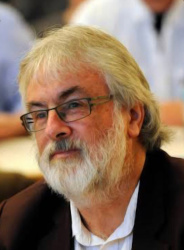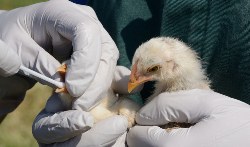Melbourne Quake: Shaken, Not Stirred
It began just after a news interview. Time: a quarter past nine. Morning of September 22, and yet to take a sip from the brewed Turkish coffee, its light thin surface foam inviting. The Australian city of Melbourne in its sixth lockdown, its residents fatigued and ravaged by regulations. Rising COVID-19 numbers, seemingly inexorable.
Then, an initial, gentle movement of floors, a slight, barely detectable swaying of the walls of the apartment. Across City Road in South Bank, one part of the beleaguered Crown Casino establishment seemed to be rippling, the glass forming gentle, shimmering waves across the surface. Melbourne was experiencing the rarest of earthquakes.
Within a minute, it had passed. The alarms in the building complex had not gone off. Sprinklers had not been activated. But the occupants were taking no chances. Families scooted to the lifts carrying toys, blankets and even the odd pillow, not thinking that this would be a risky prospect. Face masks were forgotten (they remain mandatory in Melbourne) and hearty apologies exchanged.
The concierge, a cranky though eminently well meaning Celtic beast of a man rushed out to the front of the building. Even with his face covered with a mask, his forehead was creased with concern. “I suggest you come back in and stay in the lobby. If something falls down, it will kill you.” As an afterthought, he added: “And no facemask is going to save you.”
An exodus followed. Within a matter of minutes, the cafes across the city started to heave with customers seeking their highly specialised Melbourne brew. Gossip was exchanged, rumours transmitted. Magnitude of the earthquake, concluded the smartphone users: 5.8 on the scale. Location of the epicentre: Alpine National Park southeast of Mansfield, 10km deep. Numbers are duly adjusted. To the 5.8 quake can be added two: one registering 4.0 and another 3.1.
The room for embellishment was vast. “The strongest earthquake experienced in Victoria since European settlement,” came the grave words of a seismologist. The anchors on the ABC News channel were addled enough by the incident to blubber about feeling terror. Hundreds of videos and images flooded social media, many prosaic catches, clippings and takes about swinging lights, shaking platforms, disturbed crockery and moving matter. All, in the big league of earthquakes, fairly amateurish for any seasoned survivor. On that score, that could hardly count as a bad thing.
Sketchy amateur audits on the extent of damage are made with tabloid hurriedness. Reports of damaged buildings on Chapel Street started filtering through. Historically, the street is known as a place to eat, drink and seek entertainment, though not much of late. A scruffy passer-by interviewed on national television cheerfully observed that “everything happens on Chapel Street.” At the very least, the lockdown might have saved a few lives.
In the meantime, the police presence in the city seemed awe inspiringly boisterous in anticipation of anti-vaccination and anti-lockdown protests. For the last few days, violent gatherings have menaced the offices of the Construction, Forestry, Mining and Energy Union. The union has taken the position that vaccines are, in the words of a statement, “the only way out of this pandemic” but believes it is “up to the individual” to reach a decision on receiving them. A certain number of union members have berated the CFMEU for not taking the pitchforks to those urging compulsory vaccination in the construction industry.
The protesters received further encouragement with the announcement by the Victorian government that the construction industry in the city and other regional centres would be shut down for 14 days. The reason cited for this drastic action: poor compliance with public health directives. “We’ve been clear,” Tim Pallas, Victoria’s treasurer and minister for industrial relations huffed, “if you don’t follow the rules, we won’t hesitate to take action – we have seen widespread noncompliance across the industry and that’s why we’re taking necessary steps to protect every single Victorian.” Sites will be permitted to reopen on demonstrating that they have complied with the public health orders.
The honchos in the movement are wondering if there has been an infiltration by what they describe with flapping vagueness as right wing elements. Sally McManus, secretary of the Australian Council for Trade Unions, certainly thinks so, while Steve Purvinas, federal secretary of the aviation engineers’ union is philosophical. “The anti-vaxxers think those people who are vaccinated are crazy, the people who are pro-vaccine think the anti-vaxxers are crazy. We represent all our members regardless of how crazy they may be.”
The picture is, as often the case with such movements, more complex. The Australian Financial Review opined that many of the protestors “looked less like neo-Nazis and more like desperate men who felt they had little left to lose.” But the CFMEU has become a different creature over the course of a decade, one less amicable to left-wing, class-based causes. Its burly Victorian State Secretary John Setka keeps company with shop stewards from family circles and those of the Croatian community whose ties with the nationalist right and anti-vaccination are known. Some of the marchers, seeking to square the stubborn circle, link the quake to the Victorian Premier, Daniel Andrews. “Dan Andreas Fault” starts to gain traction through the sewerage outlets of Twitter.
The quake has left its mark, even if it has not come in the form of catastrophic loss of life and a huge reconstruction bill. Melbourne’s residents await aftershocks and are warned to expect more, possibly over a period of weeks or months. Seismologists are finding themselves in high demand. A message from the Celtic beast circulated to all residents was forgiving. “Perfectly fine to have a stiff drink, even though it’s only 11 in the morning.”
Dr. Binoy Kampmark was a Commonwealth Scholar at Selwyn College, Cambridge. He lectures at RMIT University, Melbourne. Email: bkampmark@gmail.com


 Gordon Campbell: On The Coalition’s Awful, Not Good, Very Bad Poll Results
Gordon Campbell: On The Coalition’s Awful, Not Good, Very Bad Poll Results Ian Powell: Policy Vacuum Enables For-profit Corporate General Practice Ownership By Stealth
Ian Powell: Policy Vacuum Enables For-profit Corporate General Practice Ownership By Stealth Gordon Campbell: On Iran Killing Its Rappers, And Searching For The Invisible Dr. Reti
Gordon Campbell: On Iran Killing Its Rappers, And Searching For The Invisible Dr. Reti Peter Dunne: MPs Unusually Quiet On Pay Rise
Peter Dunne: MPs Unusually Quiet On Pay Rise Ian Powell: Cuba And New Zealand: A Relationship Worthy Of Strengthening
Ian Powell: Cuba And New Zealand: A Relationship Worthy Of Strengthening Gordon Campbell: On bird flu, AUKUS entry fees and Cindy Lee
Gordon Campbell: On bird flu, AUKUS entry fees and Cindy Lee